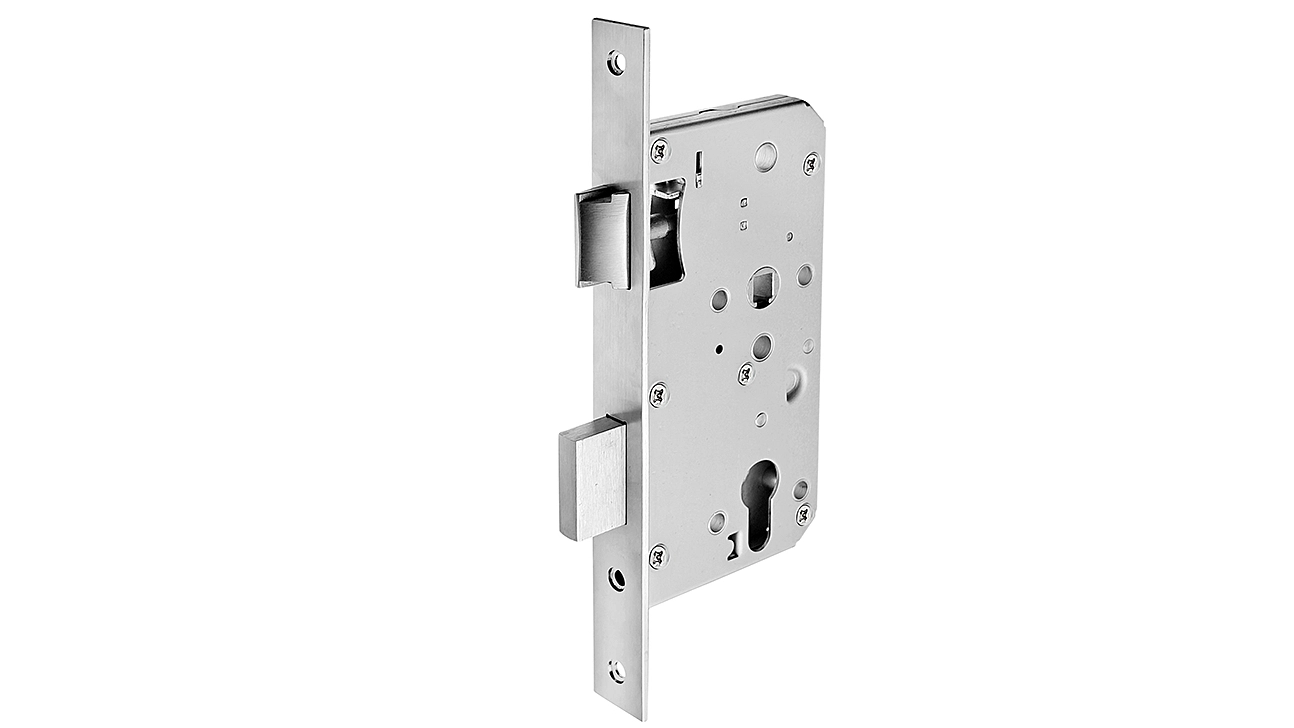When you're shopping for security hardware, you'll come across a lot of technical terms and certifications. One of the most important labels to look for is "UL-rated." But what does that actually mean? Is it a guarantee of quality, a fire safety rating, or something else entirely?
Understanding this certification is key to making an informed decision about the security of your home or business. This guide will explain what a UL-rated lock is, what the testing process involves, and why it matters for your peace of mind. We'll also clarify the difference between a standard UL rating and a fire rating, so you can choose the right hardware for every door.

What is Underwriters Laboratories (UL)?
Underwriters Laboratories (UL) is a global safety certification company that has been around for over a century. Founded in 1894, UL is one of the oldest and most respected third-party testing organizations in the world. Its mission is to make the world a safer place by testing products and writing safety standards for a vast range of items, from consumer electronics to building materials.
When a product has a UL certification, it means a representative sample has been rigorously tested by UL's independent engineers and found to meet specific, nationally recognized safety and performance standards. This certification isn't a one-time approval; UL conducts regular follow-up visits to manufacturers to ensure that products continue to meet the required standards. The UL mark on a product signifies a commitment to safety and quality.
What is a UL-Rated Lock?
A UL-rated lock is a lock that has successfully passed a series of stringent tests designed by Underwriters Laboratories to evaluate its security, durability, and overall performance. These tests simulate real-world break-in attempts, including picking, drilling, prying, and other forms of forced entry.
The primary standard used for testing locks is UL 437: The Standard for Key-Operated Locks. A lock that earns this certification has proven its ability to withstand sophisticated attacks for a set period. This rating provides a reliable benchmark for consumers and businesses, indicating that the lock offers a high level of protection against unauthorized entry.
The UL 437 Testing Process
To achieve a UL 437 rating, a lock must endure a battery of grueling tests. These are not simple pass/fail checks; they are designed to push the lock to its absolute limits. The tests include:
· Picking and Manipulation: Expert locksmiths attempt to pick the lock using a variety of specialized tools. The lock must resist these attempts for a minimum of 10 minutes of continuous picking.
· Drilling and Sawing: The lock's core components are subjected to attacks with high-speed carbide drills and saws. The goal is to see if an intruder could drill through the cylinder or saw off the bolt.
· Forced Entry Attacks: Testers use tools like hammers, chisels, and pry bars to try to force the lock open. The lock must withstand these brutal attacks without failing.
· Environmental Tests: The lock is exposed to extreme conditions, such as salt spray (to test for corrosion), extreme temperatures, and humidity to ensure it will function reliably in various environments.
· Durability and Cycle Testing: The lock is mechanically operated for thousands of cycles to simulate years of use. This ensures that the internal components won't wear out prematurely and compromise security.
If a lock survives all of these challenges, it can be officially listed as a UL 437 certified lock.
Understanding Different Types of UL-Rated Locks
While the UL 437 standard is a benchmark for high-security locks, you may also see other UL ratings. One common type is the UL certified mortise lock. Mortise locks are installed into a pocket (or mortise) cut into the edge of a door, making them generally stronger and more secure than standard cylindrical locks.
When a mortise lock is UL certified, it has been tested not only for its resistance to forced entry but also often for its role as part of a fire door assembly. This brings us to a crucial distinction.
Does a UL Rating Mean the Lock is Fire-Rated?
This is a common point of confusion. The answer is: not necessarily. A standard UL rating (like UL 437) is focused on security against burglary and forced entry. A fire rating, on the other hand, is specifically about a product's ability to withstand fire and smoke for a certain duration.
Fire-rated locks are tested under a different standard, typically UL 10C: Standard for Positive Pressure Fire Tests of Door Assemblies. Here’s what that means:
· Fire-Rated Locks: These locks are designed to be used on fire doors. During a fire, they must remain latched to keep the door closed, preventing the spread of fire and smoke. They are tested to ensure they do not melt or fail under extreme heat. Fire-rated locks will have a specific fire rating, such as 20-minute, 45-minute, 90-minute, or 3-hour.
· UL Security-Rated Locks: These locks are tested for their ability to resist break-ins.
A lock can be one, the other, or both. A high-security UL certified mortise lock might carry both a UL 437 security rating and a UL 10C fire rating. When purchasing a lock for a fire-rated door (like the door between your garage and house, or in a commercial building), you must use a fire-rated lock to comply with building codes. The product documentation will clearly state if it has a fire rating and for how long.

Why Choose a UL-Rated Lock?
Investing in a UL-rated lock offers several significant advantages:
1.Verified Security: You're not just taking the manufacturer's word for it. An independent, globally respected organization has put the lock to the test and confirmed its strength and reliability.
2.Insurance Compliance: Many insurance policies, especially for businesses, require the use of UL-rated locks. Installing them can sometimes lead to lower insurance premiums because it demonstrates you are taking proactive security measures.
3.Peace of Mind: Knowing your property is protected by a lock that has withstood expert attacks provides an invaluable sense of security for your family or employees.
4.Durability: The rigorous testing for durability ensures that a UL-rated lock is built to last, providing a better long-term return on your investment compared to cheaper, non-certified alternatives.
Your Guide to Smarter Security
Understanding what a UL-rated lock is empowers you to make smarter choices when securing your property. It's more than just a sticker on a box; it's a symbol of proven security, tested against the toughest standards.
When you're ready to upgrade your security, look for the UL mark. Check if the lock is rated for security (like UL 437), fire (UL 10C), or both, depending on your needs. By investing in a certified product, you are choosing a lock that has been proven to stand up to real-world threats, providing reliable protection when it matters most.
English
العربية
Français
Русский
Español
Português
Deutsch
italiano
日本語
한국어
Nederlands
Tiếng Việt
ไทย
Polski
Türkçe
አማርኛ
ພາສາລາວ
ភាសាខ្មែរ
Bahasa Melayu
ဗမာစာ
தமிழ்
Filipino
Bahasa Indonesia
magyar
Română
Čeština
Монгол
қазақ
Српски
हिन्दी
فارسی
Kiswahili
Slovenčina
Slovenščina
Norsk
Svenska
українська
Ελληνικά
Suomi
Հայերեն
עברית
Latine
Dansk
اردو
Shqip
বাংলা
Hrvatski
Afrikaans
Gaeilge
Eesti keel
Māori
සිංහල
नेपाली
Oʻzbekcha
latviešu
অসমীয়া
Aymara
Azərbaycan dili
Bamanankan
Euskara
Беларуская мова
भोजपुरी
Bosanski
Български
Català
Cebuano
Corsu
ދިވެހި
डोग्रिड ने दी
Esperanto
Eʋegbe
Frysk
Galego
ქართული
guarani
ગુજરાતી
Kreyòl ayisyen
Hausa
ʻŌlelo Hawaiʻi
Hmoob
íslenska
Igbo
Ilocano
Basa Jawa
ಕನ್ನಡ
Kinyarwanda
गोंगेन हें नांव
Krio we dɛn kɔl Krio
Kurdî
Kurdî
Кыргызча
Lingala
Lietuvių
Oluganda
Lëtzebuergesch
Македонски
मैथिली
Malagasy
മലയാളം
Malti
मराठी
ꯃꯦꯇꯥꯏ (ꯃꯅꯤꯄꯨꯔꯤ) ꯴.
Mizo tawng
Chichewa
ଓଡ଼ିଆ
Afaan Oromoo
پښتو
ਪੰਜਾਬੀ
Runasimi
Gagana Samoa
संस्कृत
Gaelo Albannach
Sepeti
Sesotho
chiShona
سنڌي
Soomaali
Basa Sunda
Wikang Tagalog
Тоҷикӣ
Татарча
తెలుగు
ትግንያውያን
Xitsonga
Türkmençe
संस्कृत
ئۇيغۇرچە
Cymraeg
isiXhosa
ייִדיש
Yorùbá
isiZulu





































